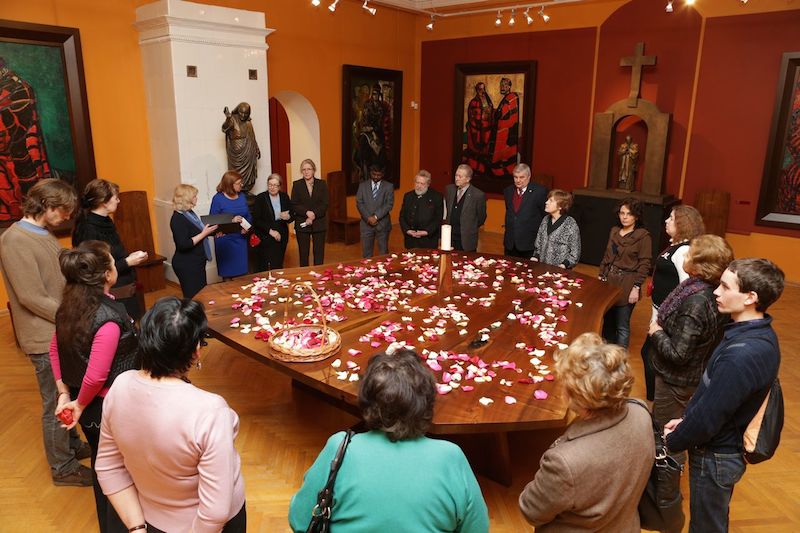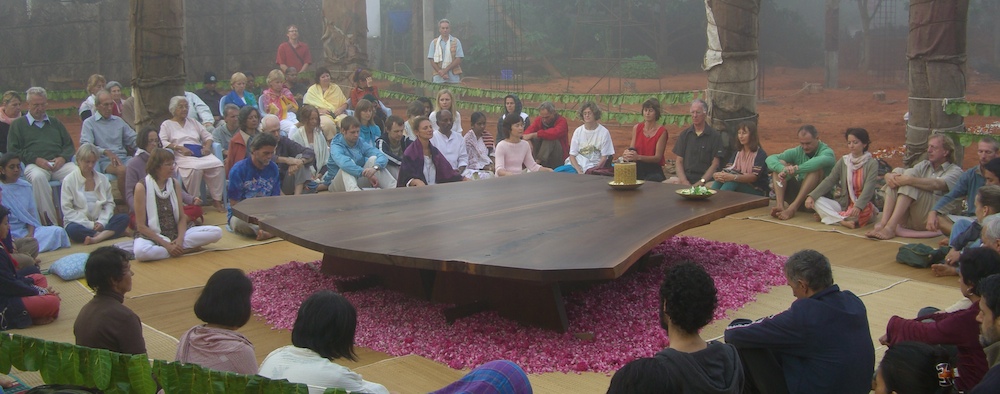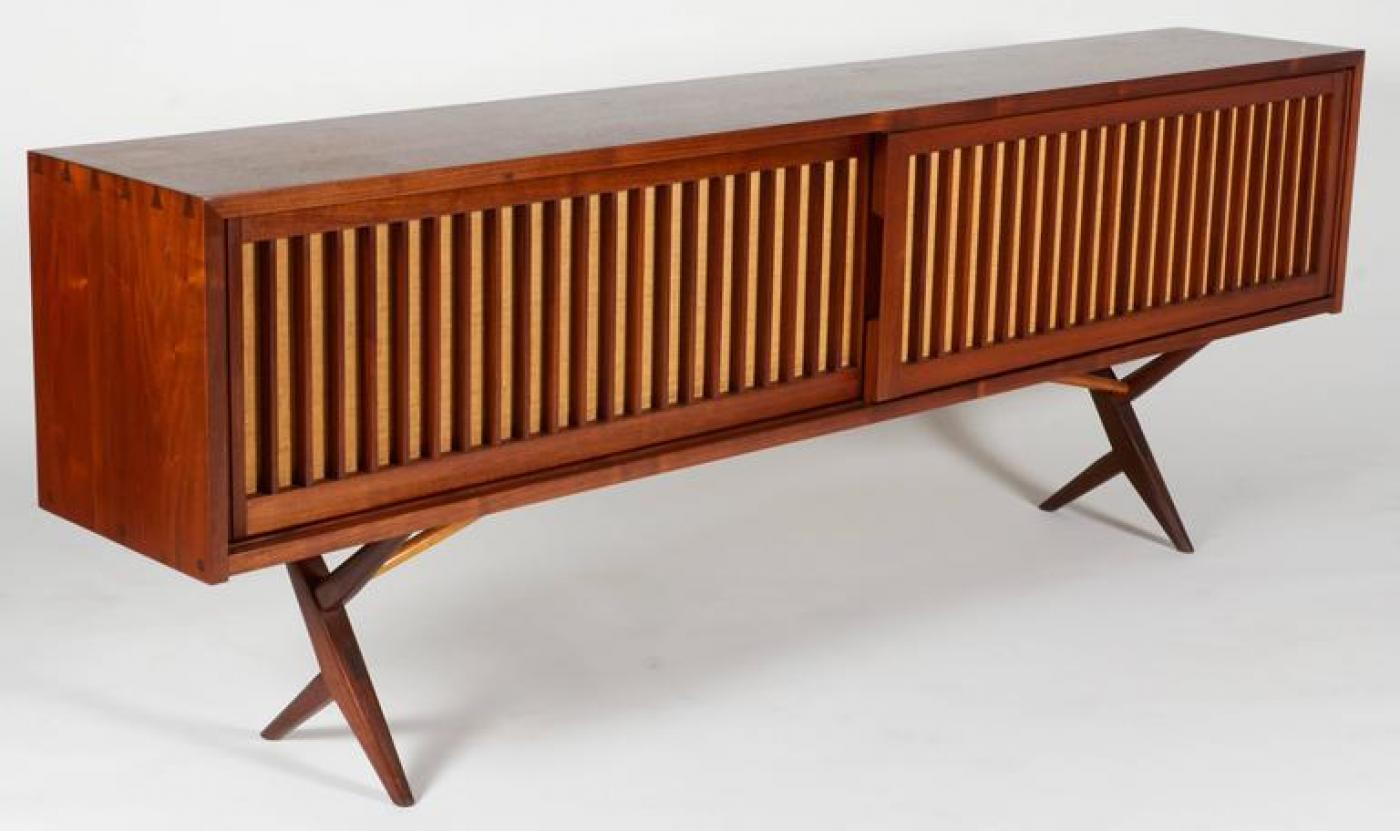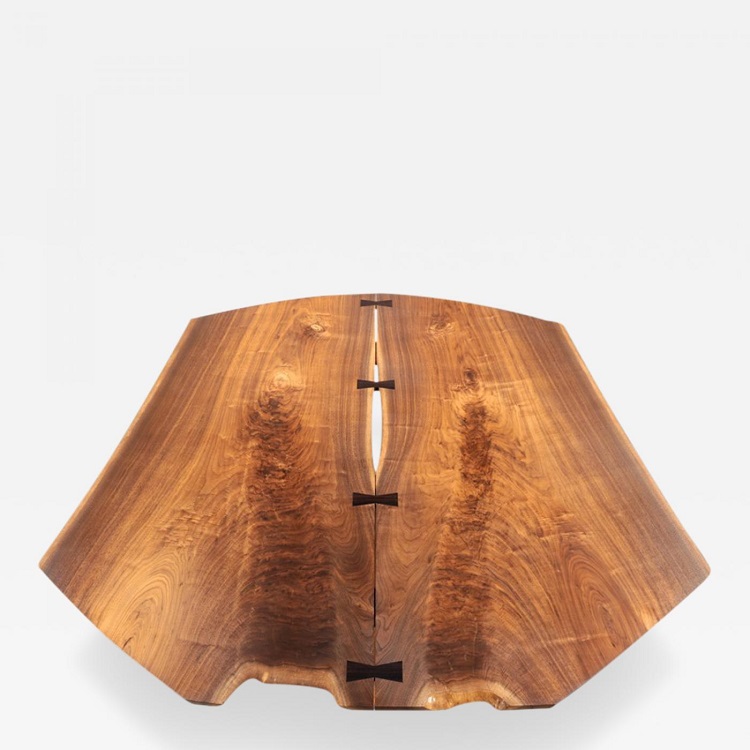Altars for Peace: The Legacy of George Nakashima

- Sketch of the first Altar for Peace. Image courtesy of The Nakashima Foundation for Peace at nakashimafoundation.org, and nakashimawoodworker.com.
When George Nakashima had the opportunity to purchase an extraordinary American walnut log in 1984, he dreamed that every continent in the world would have a safe harbor for peaceful activities, centered around an Altar of Peace created from this tree. Throughout the remainder of his life, he sought to realize his vision and turn this magnificent specimen of natural beauty into a symbol in which people could believe.
2.jpg)
- George Nakashima with his first Peace Altar, which would be installed at the Cathedral of St. John the Divine in New York City. Image courtesy of The Nakashima Foundation for Peace at nakashimafoundation.org, and nakashimawoodworker.com.

- A group gathered around the Sacred Peace Altar in Moscow. Image courtesy of The Nakashima Foundation for Peace at nakashimafoundation.org, and nakashimawoodworker.com.
A third altar was placed in Auroville, India, the international “City of Peace,” in 1996. Its permanent home is in the Unity Pavilion of the city, which sprang from the Sri Aurobindo Ashram in Pondicherry, where George Nakashima once was a disciple. The fourth Sacred Peace Table will hopefully be housed in a Peace Room in the Desmond Tutu Peace Centre in Cape Town, South Africa, as soon as funds have been raised to begin construction.

- Meditation around the Peace Altar in Auroville, India. Image courtesy of The Nakashima Foundation for Peace at nakashimafoundation.org, and nakashimawoodworker.com.
George Nakashima’s Altars for Peace span three of the world’s continents – and hopefully soon, a fourth. His successors are well on their way to fulfilling his lifelong dream of providing each continent with a safe harbor. These altars are incredible works of art that connect communities and draw people together from around the world.
|
|
Nakashima's legacy lives on through his family and his former students. Operating out of New Hope, PA, Nakashima Woodworkers’ mission is to continue the tradition of creating firm designs based on principles that are as universal as possible, and embrace the subtlety of the evolvement of the finest materials shaped with intense skill and craftsmanship.

- Cabinet by George Nakashima, c. 1970s. Offered by Lost City Arts.
Since her father’s death, Mira Nakashima has produced the classic and traditional lines, while continuing the evolution of new design solutions through her line, the Keisho Collection. Keisho in Japanese means continuance or succession – in this way, she is preserving the methods and techniques her father pioneered. This collection is an ongoing series of designs dedicated to her mother, Marion Nakashima, who passed away in 2004, created by Mira and the craftsmen trained by George.

- Conoid Bench by George Nakashima, 1981. Hickory, walnut, rosewood. Offered by Lost City Arts.
George Nakashima’s work has become coveted during the last decade, and the rise of the “free-edge” aesthetic, when the natural edge of a piece of wood is incorporated into the furniture design, is a direct result of his influence. Rooted in expressing organic nature, this style gives each piece of wood an identity beyond its utilitarian purpose.

- Construction plans for the second Peace Altar in 1995. Image courtesy of The Nakashima Foundation for Peace at nakashimafoundation.org, and nakashimawoodworker.com.
Countless designers, artists and woodworkers have looked to George Nakashima, the father of the American Craft movement, for inspiration. The legacy he left behind for us is irrefutable. His designs defied mass production, and embraced the uniqueness of the wood that he revered with humility.

































